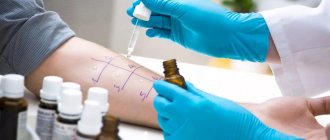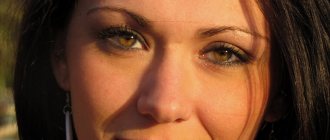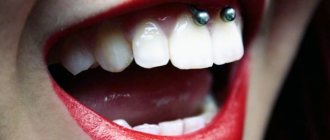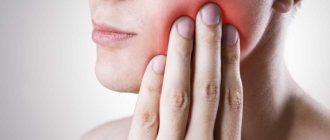Suspect No. 1 – herpes
- Cause. When pimples appear on the lips, the cause may be the activation of the herpes virus, which occurs under the influence of external factors, for example, hypothermia.
- Emergence. Before the rash appears, swelling and pain occur, then severe itching appears, after which vesicular pimples on the lip “ripen.”
- Localization. Most often, herpes is localized along the edges of the lips or in their corners.
- Appearance. With herpes on the lip, pimples resemble vague blisters with liquid. They do not have a specific shape, they are more like spots.
- Quantity. Multiple rashes.
- Feel. Patients with herpes experience burning and itching.
If pimples on the lip turn out to be a manifestation of herpes, doctors prescribe antiviral drugs. This disease should not be left to chance, because after the bubbles burst, the virus spreads along with the leaked liquid, and a new rash appears.
Reasons for appearance
Acne in women can appear for a variety of reasons. But there are the most common provocateurs:
- Hormonal changes. Various hormonal imbalances and diseases of the reproductive system can lead to the appearance of acne around the mouth.
- The use of drugs with hormonal composition. This especially applies to medications containing prednisolone and hydrocortisone. Also, uncontrolled and not coordinated with the attending physician taking hormonal contraceptives.
- Fluoride toothpaste
- Constant use of aggressive cleansers and foundations of poor quality
- Adverse weather conditions (prolonged sun exposure, strong winds)
- Standard saprophytes
- Problems with the digestive system, which directly affects human immunity
- Chronic infectious problems
Also, perioral dermatitis often appears after starting to use hormonal cosmetics to treat other skin diseases.
Women resort to the help of such drugs to relieve itching and inflammation, but in fact they only worsen the situation. Also, good intentions are the most common cause of perioral dermatitis. So it turns out that hormonal drugs improve the situation a little, and after their refusal the situation only gets worse. Therefore, it is strictly forbidden to self-medicate; you need to seek help from a qualified dermatologist.
Suspect No. 2 – acne
- Cause. Acne is a multifactorial disease. The main links in its pathogenesis are hyperkeratosis, excessive sebum production, colonization of propionibacteria, and inflammation. For example, if a small whitehead appears on the lip, a blockage of the sebaceous gland could occur, leading to the formation of a closed comedon.
- Emergence. Acne usually appears suddenly.
- Localization. With acne, pimples rarely appear on the lip, since there are few sebaceous glands in this area. Most of them are in the so-called seborrheic zone - the nose, forehead, chin, this is where acne occurs most often.
- Spring view. A slight swelling of red color; if a purulent pimple has formed on the lip, then a white head can be seen inside, the acne takes a cone-shaped shape.
- Quantity. Most often they pop out one at a time. In severe cases of acne, they may merge.
- Feel. Papules and pustules may be painful, especially when palpated.
After opening, the acne fades, so many people think that this is a great way to get rid of them, but this approach can lead to aggravation of the problem, an even greater spread of the rash.
Pimples on the lips: causes
Acne on the lip may appear for the following reasons:
- herpes virus;
- blockage of the sebaceous glands;
- stress, psycho-emotional disorders;
- allergic reaction;
- disruptions in the functioning of the facial nerves;
- improper hygiene;
- endocrine disorders;
- eating large amounts of sweets and fatty foods.
Only a doctor can determine the exact cause of the appearance of a pimple on your lip, so before you run to the pharmacy for the ointment that you prescribed for yourself, it is better to first visit a specialist and entrust him with drawing up a treatment plan.
How to deal with acne?
Treatment for acne depends on the severity of the disease. It is prescribed exclusively by a specialist. For mild to moderate acne, external therapy is primarily used18. For severe acne, emphasis is placed on systemic treatment18.
Clindovit® is a topical antibiotic that can be prescribed for acne vulgaris6. The main active ingredient in its composition is the antibiotic lincosamide clindamycin6. It fights a wide range of propionibacteria strains6. After contact with the skin, clindamycin quickly accumulates in comedones, exhibiting antimicrobial activity6. Clindovit® gel helps reduce free fatty acids on the skin6.
The drug must be applied twice a day (morning and evening) to previously cleansed and dry skin. The first results from treatment with a topical antibiotic usually become noticeable after 6-8 weeks. It is recommended to combine the use of the drug with the use of benzoyl peroxide or azelaic acid (Azelik® gel)18,28.
How to remove pimples above the upper and under the lower lip
Benzoyl peroxide
Benzoyl peroxide is an ideal combination of price and effective results against acne, even in the upper or lower lip area.
Benzoyl peroxide
How to use Peroxide?
Before using benzoyl peroxide, first wash the acne affected areas with tar soap. Even a mild cleanser would do a good job of treating acne before applying benzoyl. Gently dry the acne with a clean towel.
Gently apply a small amount of gel to acne areas above the upper or lower lip. Before using the gel, first read the instructions for use of the medicine for further clarity and confidence in the correct treatment.
Use the gel several times a day or as recommended by your healthcare professional.
Benzoyl peroxide treats acne by primarily unclogging the pores of the skin. It also kills the bacteria responsible for pimples and other cystic skin lesions.
Precautionary measures
During the first three weeks of using benzoyl peroxide, you may experience skin irritation. All these changes are normal. But if your skin does not improve even after four weeks of using peroxide, then you should immediately consult your doctor.
In case you suffer from swelling of the eyes, lips, tongue, throat tightness or breathing problems after using peroxide, contact your doctor immediately.
Do not use any other acne treatment within an hour of using benzoyl peroxide.
Using Ice to Treat Acne
What you need:
- Ice Cube
Clean towel or gauze bandage
What should you do
- Wrap an ice cube in a towel and gently press it onto the acne areas.
- Let it melt for a few minutes.
- Repeat this process several times daily.
Ice reduces the swelling of sebaceous plugs from under your skin. As a result, excess sebum production decreases, and acne gradually disappears.
Phototherapy and lasers for acne treatment
Phototherapy and lasers are used to treat acne - either endogenous porphyrins contained in P. acnes, or sources of exogenous porphyrins are additionally applied to the skin before the procedure. Porphyrins have the property of absorbing light in the blue regions of the spectrum (wavelength 415 nm), which leads to the formation of unstable oxygen and, as a result, to the destruction of pathogenic bacteria P.acnes. The FDA recommends Lumenis devices (for example, the IPL module of the M-22 device), which use high-intensity light from the blue part of the spectrum, for the treatment of papulopustular acne, i.e. acne.
Light from the red part of the spectrum can also be useful because... Compared to blue light, it has a stronger anti-inflammatory effect (although it has a lesser effect on porphyrins). Therefore, a combination of light from the blue and red parts of the spectrum will be even more useful. Facial procedures are carried out 2 times a week for 15 minutes. According to the dermatology textbook Fitzpatrick's Dermatology, after a 4-week course of therapy in 80% of patients, the number of acne decreased by 60%. But in the absence of supporting procedures, their number returns to the original level - within 3-6 months.
Photodynamic therapy is even more effective in treating acne. It consists of applying exogenous porphyrins to the skin 1 hour before the procedure (aminolevulinic acid/ALA), after which exposure to a high-power light source occurs. The latter can be pulsed dye lasers, intense pulsed light or a broadband light source in the red part of the spectrum. ALA is metabolized in the sebaceous glands and hair follicle to porphyrins, which when exposed to light lead to the release of unstable oxygen, which damages the sebaceous glands. Several photodynamic therapy treatments can provide improvement for up to 5 months.
Pulsed KTP laser (wavelength 532 nm) - also leads to a reduction in the number of acne by about 40%. Use this laser 2 times a week for 2 weeks (a total of 4 treatments are required). In addition, some of the non-ablative infrared lasers at 1450 nm and 1320 nm wavelengths may also be useful for treating acne. they cause thermal damage to the sebaceous glands. However, any of these lasers requires a course of several treatments (and the improvement lasts up to about 6 months).
One of the newest acne treatment devices is the Isolaz device (from Solta Medical). The nozzle of the device is made in the form of a photo-pneumatic device, which creates negative pressure that sucks out the fatty secretion from the mouths of the hair follicles. Immediately after this, broadband pulsed light (wavelength from 400 to 1200 nm) is turned on, which acts on the P. acnes porphyrins, destroying these bacteria, and also has an anti-inflammatory effect.
What do phototherapy and lasers do?
Regular use in courses not only improves the course of acne, thereby reducing the number of inflammatory elements. The use of phototherapy (IPL) and lasers in courses often avoids the need for oral medications (antibiotics, isotretinoin), as well as the numerous side effects associated with them. But the cost of such treatment is high. We hope that our article on the topic: How to remove acne on your face was useful to you!
Sources:
1. Higher medical education of the author of the article, 2. Textbook on dermatology “Fitzpatrick's Dermatology” (8th edition), 3. “Modern methods of treatment and rehabilitation of patients with acne vulgaris” (Barinova), 4. “Acne from the position of evidence-based medicine” (Anisimova), 5. “Cellular mechanisms of barrier protective functions of the skin and their disorders in skin diseases” (Medelets).
Prevention
In order not to wonder why acne appears on the chin, you need to take preventive measures in a timely manner. It is based on proper nutrition and care. It is also worth considering the following tips:
- when a red lump appears, do not squeeze, apply ice, apply a targeted ointment;
- do not increase the number of washes - the dermis needs its sebum to maintain hydration and elasticity;
- You need to play sports in breathable light clothing, and take a shower after training;
- It is recommended to spend more time in the fresh air, and to ventilate the premises.
Proper nutrition for acne
Fine:
- Foods rich in dietary fiber and pectin (buckwheat, pearl barley, bran, broccoli, spinach, Brussels sprouts and others).
- Foods high in zinc: liver, beef, seafood.
- Cooking food by steaming and in a slow cooker. This way, more nutrients are retained and a minimum of fat is used.
- Foods rich in vitamin A (fish oil, carrots, corn), B (cheese, cabbage, wheat cereal), E (vegetable oils, green peas, wheat germ, parsley).
Badly:
- roast;
- salty;
- spicy;
- fat;
- sweet;
- monotonous.
The recommendations are obvious and very simple. Therefore, when they ask why there is acne on the chin, doctors first of all find out the diet.
Caring for problem skin
It is recommended to wash with cool water. It is better to use special lotions, foams, micellar, but not soap with a high alkali content. Once a week you can make cleansing masks based on clay, use a scrub or light peeling.
Creams with hyaluronic acid, collagen and urea are suitable for moisturizing. Nutrition is provided by products containing panthenol, vitamins and microelements.
Let's sum it up
Let us briefly highlight the main points:
- Rashes occur due to excess sebum, which can be caused by both serious diseases of the body and lack of hygiene.
- Men and women may have different reasons.
- Treating a problem is always more difficult than following preventive measures.
- If acne appears, you should see a doctor, because this can prevent serious diseases.
High-quality cosmetics, medications and cosmetic techniques help to achieve good results in treating rashes. But first, don’t forget to find out exactly the reason why your chin breaks out with acne, and then do something about it.










